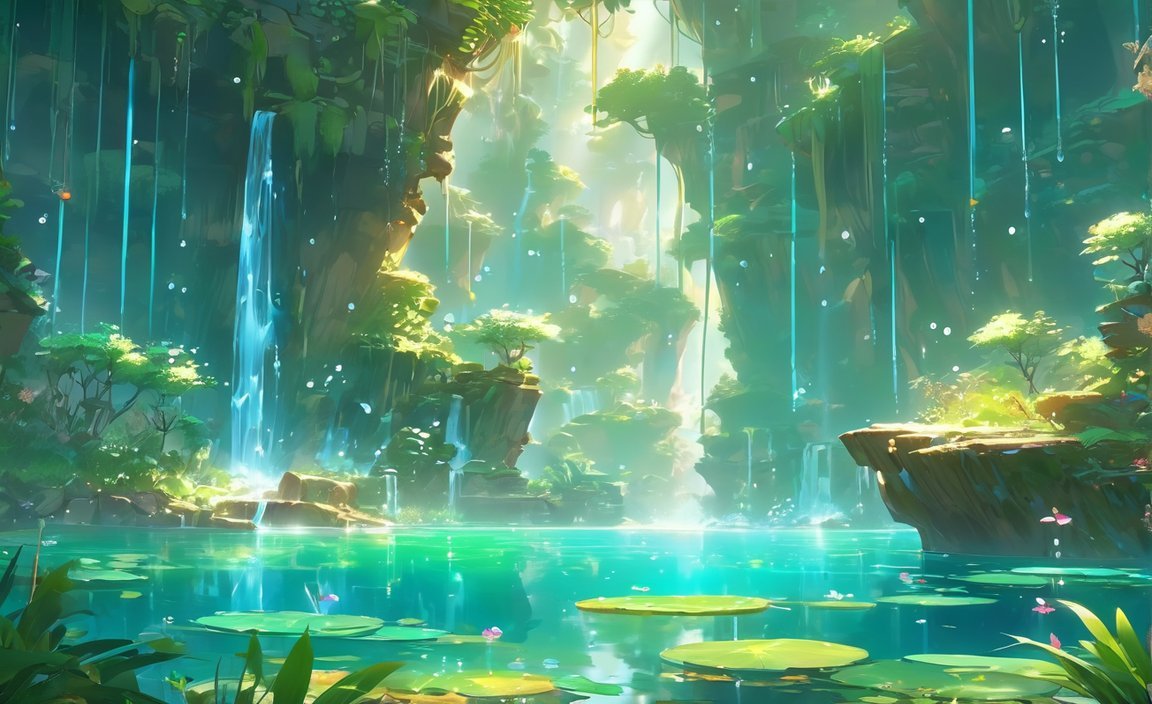Water, the elixir of life, is a precious resource that sustains all living beings on our planet. It is essential for our survival, health, and well-being. Yet, despite its importance, water is a finite resource that faces increasing pressure from human activities. As populations grow and demand for water intensifies, the need for water conservation becomes more crucial than ever.
Water conservation encompasses the practices and techniques aimed at reducing water consumption and optimizing its use. It is not about deprivation or sacrifice; rather, it is about adopting a mindful approach to water usage and ensuring that this precious resource is available for present and future generations.
10 Advantages of Water Conservation


Embarking on a journey of water conservation not only benefits the environment but also brings about a multitude of advantages for individuals and communities alike. Let’s delve into the 10 advantages of water conservation that make it an imperative practice for a sustainable future:
1. Improves the Quality of Drinking Water
Water conservation is not just about saving water; it’s about safeguarding the quality of our drinking water. When water treatment plants are overburdened due to excessive water consumption, they may struggle to adequately treat and purify the water supply. This can lead to the presence of contaminants and impurities in our drinking water, posing potential health risks.
By reducing water consumption, we alleviate the pressure on water treatment facilities, allowing them to operate more efficiently and dedicate more time and resources to the treatment process. This enhanced efficiency translates into cleaner and safer drinking water for all, ensuring that our health and well-being are protected.
Here’s a closer look at how water conservation contributes to improved drinking water quality:
Reduced Strain on Water Treatment Plants: Conserving water reduces the volume of water that needs to be treated, allowing water treatment plants to operate within their capacity. This alleviates the strain on these facilities, enabling them to focus on thorough and effective treatment processes.
Enhanced Treatment Efficiency: With reduced water flow, treatment processes can be optimized, ensuring that contaminants are effectively removed. This results in cleaner drinking water that meets stringent quality standards.
Improved Monitoring and Maintenance: Reduced water consumption allows for more frequent monitoring and maintenance of water treatment equipment. This proactive approach helps identify and address potential issues promptly, preventing contamination and maintaining the highest quality of drinking water.
In essence, water conservation is an investment in public health. By conserving water, we ensure that our drinking water is safe, clean, and free from contaminants, safeguarding the health and well-being of our communities.
2. Saves Money: A Sound Financial Investment
In today’s world, where financial considerations play a significant role in our daily lives, water conservation emerges as a smart financial decision. By adopting water-saving practices, households and businesses can reap substantial monetary benefits, stretching their budgets and freeing up funds for other essential needs.
The connection between water conservation and financial savings is straightforward: reducing water consumption directly translates into lower water bills. By implementing water-efficient measures in our daily routines, we can significantly reduce the amount of water we use, leading to a noticeable decrease in water expenses.
Here’s a breakdown of how water conservation contributes to financial savings:
Reduced Water Bills: Every drop saved translates into lower water bills. By adopting water-saving habits, households and businesses can reduce their water consumption, leading to direct cost savings on their water bills.
Lower Wastewater Treatment Costs: In many municipalities, wastewater treatment costs are tied to water consumption. By reducing water usage, we can potentially lower wastewater treatment expenses, further contributing to overall financial savings.
Extended Appliance Lifespan: Water-efficient appliances, such as low-flow showerheads and faucets, not only conserve water but also reduce wear and tear on plumbing fixtures and appliances. This can extend the lifespan of these appliances, minimizing the need for frequent replacements and associated costs.
Potential Tax Rebates and Incentives: Many governments and utility companies offer rebates and incentives for adopting water-saving practices. These incentives can provide financial encouragement and support for households and businesses that make water conservation a priority.
Water conservation is not just about environmental responsibility; it’s also about financial prudence. By conserving water, we can reduce our monthly water bills, extend the lifespan of our appliances, and potentially qualify for financial incentives, all while contributing to a more sustainable future.
3. Protects Drinking Water Resources: Ensuring Sustainability for Future Generations
Water is the lifeblood of our planet, and its preservation is paramount for the well-being of all living beings. Water conservation plays a pivotal role in safeguarding our finite drinking water resources, ensuring that this precious asset remains available for present and future generations.
As the world’s population grows and demands for water intensify, the strain on our drinking water resources becomes increasingly evident. Overexploitation of these resources can lead to depletion, contamination, and scarcity, jeopardizing the availability of clean drinking water for millions.
Water conservation offers a solution to this growing challenge. By reducing our overall water consumption, we lessen the pressure on our drinking water sources, allowing them to replenish naturally and sustainably. This ensures that our rivers, lakes, and aquifers remain healthy and viable, providing a continuous supply of clean drinking water for generations to come.
Here’s how water conservation contributes to the protection of drinking water resources:
Reduced Water Extraction: Conserving water directly reduces the amount of water extracted from natural sources. This allows rivers, lakes, and aquifers to replenish their water reserves, maintaining their natural balance and ensuring long-term sustainability.
Enhanced Groundwater Recharge: Water conservation practices, such as rainwater harvesting and permeable paving, promote groundwater recharge. This increases the infiltration of water into aquifers, replenishing these vital underground reservoirs.
Protects Aquatic Ecosystems: Overextraction of water can disrupt aquatic ecosystems, harming plant and animal life. Water conservation helps maintain healthy water levels in rivers, lakes, and wetlands, preserving these vital habitats and supporting biodiversity.
Prevents Water Scarcity: Water conservation plays a crucial role in preventing water scarcity, a looming threat that affects millions worldwide. By reducing our water consumption, we can extend the availability of limited water resources, ensuring that communities have access to clean drinking water even during periods of drought or stress.
In essence, water conservation is an investment in our future. By conserving water today, we safeguard our drinking water resources, ensuring that this precious gift of nature remains available for generations to come. It is a responsibility we owe to ourselves, our communities, and the planet we share.
4. Minimizes Water Pollution and Health Risks: Salvaging Our Waterways and Safeguarding Public Health
Water pollution poses a significant threat to human health and environmental well-being. Contaminated waterways can harbor harmful bacteria, viruses, and chemicals, increasing the risk of waterborne diseases such as diarrhea, cholera, and typhoid. Water conservation emerges as a powerful tool in combating water pollution and safeguarding public health.
By reducing our water consumption, we directly lessen the amount of wastewater generated. This, in turn, reduces the strain on sewage treatment systems, allowing them to operate more effectively and minimize the release of untreated or inadequately treated wastewater into our waterways.
Here’s a closer look at how water conservation contributes to minimizing water pollution and protecting public health:
Reduced Wastewater Discharge: Conserving water directly lowers the volume of wastewater generated, reducing the burden on sewage treatment plants. This allows for more efficient treatment and minimizes the risk of untreated wastewater entering our rivers, lakes, and oceans.
Enhanced Wastewater Treatment: With reduced wastewater flow, sewage treatment plants can dedicate more time and resources to the treatment process. This enhanced treatment efficiency helps remove harmful pollutants and contaminants from wastewater, preventing them from reaching our waterways and posing health risks.
Protects Aquatic Ecosystems: Water pollution disrupts aquatic ecosystems, harming plant and animal life. By reducing wastewater discharge, we protect these ecosystems, allowing them to thrive and support diverse biodiversity.
Prevents Waterborne Diseases: Water conservation plays a crucial role in preventing the spread of waterborne diseases. By minimizing wastewater discharge and enhancing wastewater treatment, we reduce the risk of contaminants entering our drinking water sources and spreading waterborne illnesses.
In essence, water conservation is a safeguard for public health. By conserving water, we protect our waterways from pollution, prevent the spread of waterborne diseases, and contribute to a healthier environment for all living beings.
5. Reduces the Need for Costly Water Infrastructure: A Fiscally Responsible Approach
Water infrastructure, encompassing water treatment plants, distribution systems, and wastewater treatment facilities, plays a vital role in delivering clean water to our homes and businesses. However, constructing and maintaining this infrastructure comes at a substantial cost, placing a financial burden on municipalities and taxpayers. Water conservation offers a fiscally responsible approach by reducing the need for costly water infrastructure projects.
As water consumption increases, so does the demand for expanded and upgraded water infrastructure. This can necessitate the construction of new water treatment plants, expansion of water distribution networks, and upgrades to wastewater treatment facilities. These projects can be extremely expensive, requiring significant investments from municipalities and taxpayers.
Water conservation helps mitigate these costs by reducing the overall demand for water infrastructure. By adopting water-saving practices, we can minimize the strain on existing infrastructure, delaying the need for costly expansions and upgrades. This translates into direct savings for municipalities and taxpayers, allowing them to allocate funds towards other essential needs.
Here’s a detailed breakdown of how water conservation contributes to reducing the need for costly water infrastructure:
Reduced Demand for New Water Treatment Plants: Conserving water lessens the pressure on existing water treatment plants, postponing the need for constructing new facilities. This saves municipalities the substantial costs associated with planning, designing, and building new water treatment plants.
Delayed Expansion of Water Distribution Systems: By reducing water consumption, we can minimize the strain on water distribution networks, deferring the need for costly expansions. This saves municipalities the expense of laying new pipes, upgrading pumping stations, and expanding distribution infrastructure.
Minimized Upgrades to Wastewater Treatment Facilities: Conserving water reduces the volume of wastewater generated, alleviating the burden on wastewater treatment plants. This can postpone the need for costly upgrades and expansions, saving municipalities significant funds.
In essence, water conservation is an investment in fiscal responsibility. By conserving water, we reduce the demand for expensive water infrastructure projects, saving municipalities and taxpayers money that can be better utilized for other essential services and community needs.
6. Maintains the Health of Aquatic Environments: Preserving the Lifeline of Biodiversity
Water is the lifeblood of aquatic ecosystems, sustaining a rich tapestry of plant and animal life. From the tiniest microorganisms to the majestic whales, aquatic organisms rely on water for their survival and reproduction. However, human activities, such as excessive water withdrawals, threaten the health of these vital ecosystems. Water conservation emerges as a critical tool in preserving the delicate balance of aquatic environments and safeguarding the biodiversity they harbor.
By reducing water consumption, we ensure that rivers, lakes, and wetlands have sufficient water to maintain their ecological integrity. This means providing adequate water for essential functions like nutrient cycling, habitat provision, and species migration. When water levels decline due to excessive withdrawals, these ecosystems face a cascade of negative consequences.
Here’s how water conservation contributes to maintaining the health of aquatic environments:
Preserves Habitats: Aquatic organisms rely on specific water levels and flow regimes for their habitats. Conserving water helps maintain these conditions, ensuring that critical habitats for fish, amphibians, reptiles, birds, and other aquatic species are not compromised.
Maintains Ecosystem Processes: Water conservation helps maintain essential ecosystem processes, such as nutrient cycling and food webs. By ensuring adequate water flow, we support the natural processes that sustain aquatic ecosystems and the diverse species they support.
Protects Biodiversity: Aquatic ecosystems are hotspots of biodiversity, harboring a vast array of plants and animals. Water conservation helps protect this biodiversity by preserving habitats, maintaining ecosystem functions, and ensuring the availability of water for all species.
Enhances Ecosystem Resilience: Water conservation can enhance the resilience of aquatic ecosystems to climate change and other stressors. By maintaining water levels and flow regimes, we help these ecosystems adapt to changing conditions and maintain their ecological balance.
In essence, water conservation is an act of stewardship for our planet’s aquatic ecosystems. By conserving water, we protect the delicate balance of these vital ecosystems, safeguard the biodiversity they support, and contribute to a healthier planet for all living beings.
7. Saves Energy Used to Pump, Heat, and Treat Water: A Sustainable Approach for a Greener Future
Water conservation extends its benefits beyond environmental protection and financial savings, reaching into the realm of energy efficiency and climate change mitigation. By reducing water consumption, we directly lower the energy required to pump, heat, and treat water, minimizing our carbon footprint and contributing to a more sustainable future.
The energy-water nexus is a complex and intertwined relationship. Supplying water to our homes, businesses, and industries demands a significant amount of energy. Water needs to be pumped from its source, often located at lower elevations, to treatment plants and then distributed to end users. This process involves energy-intensive operations, such as pumping, heating, and chemical treatment.
Water conservation directly reduces the energy required for these processes. By consuming less water, we lessen the amount of water that needs to be pumped, heated, and treated. This translates into lower energy consumption, reduced greenhouse gas emissions, and a smaller carbon footprint.
Here’s a breakdown of how water conservation contributes to energy savings:
Reduced Energy for Pumping: Conserving water directly lowers the amount of water that needs to be pumped from its source to treatment plants and distribution networks. This reduces the energy consumption of pumps, which are major energy users in the water supply system.
Minimized Energy for Heating: Water heating accounts for a significant portion of household energy consumption. Conserving water reduces the amount of water that needs to be heated, lowering energy consumption and associated utility costs.
Optimized Energy for Treatment: Water treatment processes require energy for various operations, such as chemical dosing, filtration, and disinfection. Conserving water optimizes the efficiency of these treatment processes, reducing overall energy consumption.
Reduced Reliance on Fossil Fuels: By lowering energy consumption for water management, we minimize our reliance on fossil fuels, the primary source of energy for water pumping, heating, and treatment. This contributes to reducing greenhouse gas emissions and mitigating the effects of climate change.
In essence, water conservation is a cornerstone of energy efficiency and a powerful tool in combating climate change. By conserving water, we reduce our energy footprint, minimize our reliance on fossil fuels, and contribute to a more sustainable future for our planet.
8. Minimizes the Effects of Drought and Water Shortages: A Proactive Approach to Water Security
In a world facing an increasingly unpredictable climate, water scarcity is emerging as a global threat. Droughts, characterized by prolonged periods of below-average rainfall, can lead to severe water shortages, impacting agriculture, industries, and communities alike. Water conservation emerges as a proactive and strategic approach to mitigate the effects of droughts and water shortages, ensuring water security for present and future generations.
By adopting water-saving practices, communities can reduce their overall water consumption, creating a buffer during periods of drought. This buffer, or reserve, extends the availability of limited water resources, allowing communities to cope with reduced water availability and maintain essential water services.
Here’s how water conservation contributes to minimizing the effects of droughts and water shortages:
Extends Water Availability: Conserving water during periods of normal rainfall creates a reserve that can be drawn upon during droughts. This reserve extends the availability of limited water resources, ensuring that communities have access to water for essential needs, such as drinking, sanitation, and hygiene.
Protects Agriculture: Agriculture is a major water consumer, and droughts can have devastating impacts on crop yields and livestock production. Water conservation in agriculture, such as adopting efficient irrigation systems and implementing drought-resistant crops, can help mitigate these impacts and maintain food security during droughts.
Maintains Industrial Operations: Industries also rely on water for their operations, and water shortages can disrupt production and lead to economic losses. Water conservation in industries, such as implementing water recycling and reuse practices, can help maintain industrial operations during droughts and minimize economic disruptions.
Prepares for Future Water Scarcity: Water conservation is not just about reacting to droughts; it’s about preparing for future water scarcity. By adopting water-saving practices today, we can reduce our reliance on limited water resources and build resilience in anticipation of future droughts and water shortages.
In essence, water conservation is an investment in water security. By conserving water today, we safeguard our communities and ecosystems from the devastating consequences of droughts and water shortages, ensuring a sustainable water future for all.
9. Guards against Rising Costs and Political Conflict: Preserving Peace and Equity in a Water-Scarce World
Water, the very essence of life, is not just a resource; it is a catalyst for peace and prosperity. However, as water scarcity intensifies, the risk of rising water costs and political conflicts over this precious resource also escalates. Water conservation emerges as a powerful tool to avert these conflicts and ensure a more equitable and sustainable distribution of water for all.
As water scarcity becomes more prevalent, the competition for this limited resource intensifies. This can lead to increased water costs, as communities and industries vie for access to dwindling supplies. These rising costs can disproportionately impact low-income communities, exacerbating existing social and economic inequalities.
Moreover, water scarcity can fuel political tensions and conflicts, particularly in regions where water resources are shared across borders or among different communities. As access to water becomes a matter of survival, competition and disputes over water rights can escalate, leading to instability and violence.
Water conservation offers a proactive solution to mitigate these risks. By reducing overall water consumption, we can alleviate the pressure on limited water resources, preventing them from becoming a source of conflict. This, in turn, contributes to a more equitable and sustainable distribution of water, ensuring that all communities have access to this essential resource.
Here’s how water conservation contributes to guarding against rising costs and political conflict:
Reduces Water Costs: Conserving water directly reduces the demand for this precious resource, which can help stabilize water prices and prevent them from skyrocketing. This ensures that water remains affordable for all, particularly low-income communities, preventing them from being priced out of access to this essential need.
Enhances Water Security: Water conservation helps to enhance water security for all, ensuring that communities have access to sufficient water for their basic needs, even during periods of scarcity. This reduces the risk of conflicts arising from water scarcity and promotes cooperation and collaboration over shared water resources.
Promotes Equitable Distribution: By reducing overall water consumption, we can ensure that water resources are distributed more equitably among different communities and sectors. This promotes social justice and prevents conflicts that arise from unequal access to water.
Fosters International Cooperation: Water conservation encourages international cooperation on water management, particularly in regions where water resources are shared across borders. By working together to conserve water, countries can prevent conflicts and promote sustainable water management practices for the benefit of all.
In essence, water conservation is an investment in peace and equity. By conserving water, we can alleviate water scarcity, prevent rising costs, avert political conflicts, and ensure a more equitable and sustainable distribution of this precious resource for all. It is a collective responsibility we owe to ourselves, our communities, and future generations.
10. Helps to Preserve Our Environment: A Holistic Approach to Planetary Health
Water is not just a resource; it is the very fabric of life, the lifeblood of our planet’s ecosystems. From the towering trees of ancient forests to the microscopic life teeming in the depths of oceans, water sustains all living beings. Water conservation, therefore, is not just about saving water; it is about preserving the delicate balance of our environment and ensuring the well-being of all life on Earth.
By conserving water, we protect the health of our ecosystems, the intricate webs of life that support biodiversity and provide essential services to humanity. We ensure that rivers have sufficient water to flow, providing habitats for fish and other aquatic species. We safeguard wetlands, the natural sponges that filter pollutants and protect against floods. And we preserve forests, the vital reservoirs that store and release water, regulating the climate and maintaining the balance of ecosystems.
Here’s how water conservation contributes to preserving our environment:
Protects Aquatic Ecosystems: Water conservation ensures that rivers, lakes, and wetlands have adequate water to support diverse plant and animal life. This maintains the health of these ecosystems, providing habitats for fish, amphibians, reptiles, birds, and other aquatic species.
Preserves Biodiversity: Water conservation helps protect biodiversity by maintaining healthy aquatic ecosystems and reducing pollution. By ensuring adequate water flow and minimizing contaminants, we safeguard the habitats and food sources of countless species.
Promotes Ecosystem Resilience: Water conservation enhances the resilience of aquatic ecosystems to climate change and other stressors. By maintaining water levels and flow regimes, we help these ecosystems adapt to changing conditions and maintain their ecological balance.
Reduces Pollution: Water conservation plays a crucial role in reducing water pollution. By minimizing wastewater discharge and promoting water reuse, we lessen the contamination of our waterways and prevent the spread of waterborne diseases.
Protects Natural Landscapes: Water conservation helps protect natural landscapes, such as forests, wetlands, and grasslands. By reducing water withdrawals, we ensure that these ecosystems have sufficient water to thrive, providing essential services like flood control, water purification, and carbon sequestration.
In essence, water conservation is an act of stewardship for our planet. By conserving water, we protect the delicate balance of our environment, safeguard the biodiversity it supports, and contribute to a healthier planet for all living beings. It is a collective responsibility we owe to ourselves, our communities, and future generations.
Conclusion
Water conservation is not just a choice; it is a responsibility we owe to ourselves, our communities, and future generations. By adopting water-saving practices in our daily lives, we can make a significant difference in preserving this precious resource and ensuring a sustainable future for all. Let us embrace water conservation and cherish every drop, for it is the very essence of life.
- Discover the 10 benefits of water and its importance by clicking here.
- Learn about 10 environmental problems and solutions to address pressing issues affecting our planet by visiting this page.
- Interested in understanding the 10 disadvantages of water? Explore them and their implications right here.
FAQ
Q1: What are the key advantages of water conservation?
A1: Water conservation offers a multitude of benefits, including improved water quality, financial savings, protection of drinking water resources, reduced pollution and health risks, minimized infrastructure costs, maintained aquatic ecosystems, energy savings, mitigated drought impacts, reduced conflict potential, and environmental preservation.
Q2: How does water conservation contribute to improved water quality?
A2: By reducing overall water consumption, we lessen the strain on water treatment facilities, allowing them to operate more efficiently and effectively. This enhanced efficiency translates into cleaner and safer drinking water for all.
Q3: In what ways does water conservation lead to financial savings?
A3: Conserving water directly translates into lower water bills. Additionally, reduced water consumption can minimize wastewater treatment expenses and extend the lifespan of appliances, further contributing to overall financial savings.
Q4: How does water conservation help protect drinking water resources?
A4: Water conservation helps safeguard our finite drinking water resources by reducing the amount of water extracted from rivers, lakes, and aquifers. This ensures that these vital sources remain replenished and sustainable for future generations.
Q5: What role does water conservation play in minimizing water pollution and health risks?
A5: By reducing water consumption, we directly lessen the amount of wastewater generated, minimizing the contamination of our waterways and preventing the spread of waterborne diseases. This contributes to a healthier environment and protects public health.
- Unlock 6000+ words beginning with he: A comprehensive analysis - April 20, 2025
- Mastering -al Words: A Complete Guide - April 20, 2025
- Master Scrabble: High-Scoring BAR Words Now - April 20, 2025
















